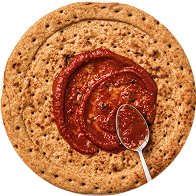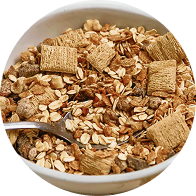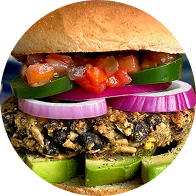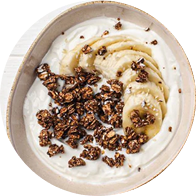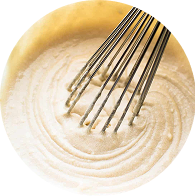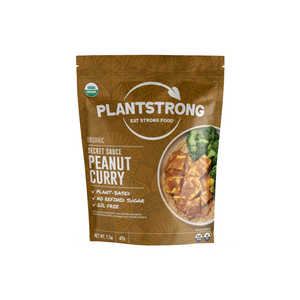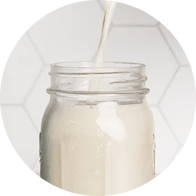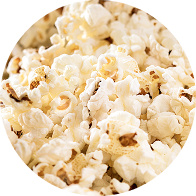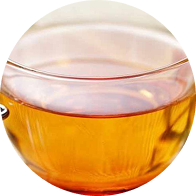Rethinking Fitness: Why Walking May Be the Key to Longevity
The Big Lie: Were We Really Born to Run?
For years, we’ve been told that running is the pinnacle of fitness—the key to weight loss, endurance, and longevity. Books like Born to Run and the explosion of marathons and ultra-endurance races have convinced millions to lace up their sneakers and hit the pavement. But what if this entire movement is built on a myth?
In a provocative discussion on the PLANTSTRONG Podcast, former triathlete and author Brad Kearns, co-author of Born to Walk, challenges everything we thought we knew about running. He makes the case that walking—not running—is the most natural, sustainable, and beneficial form of movement for health and longevity.
Here is a summary of the key insights shared with Rip Esselstyn:
1. The Running Boom Was Built on Marketing—Not Science
Running wasn’t always a mass-participation sport. Before the 1970s, only elite, highly trained athletes took on long-distance running. But that all changed when Nike introduced cushioned running shoes and began marketing the idea that anyone could be a runner. The explosion of marathons and the “just do it” mentality led to millions of people pounding the pavement—many of them completely unprepared for the impact.
"More than 50% of runners get injured every year. Walking? Almost never." – Rip Esselstyn
Key Takeaway:
Running doesn’t automatically equal health. In fact, for many, it leads to chronic injuries, fatigue, and burnout. The reality is, the body wasn’t designed to run long distances unless it’s properly adapted over time.
2. Running Isn’t the Weight Loss Machine We Think It Is
Many people take up running to lose weight, but research suggests it might not be the most effective method. Running triggers hunger and can encourage overeating. The body also compensates for intense activity by subconsciously slowing down in other areas—like fidgeting less or skipping everyday movements.
Walking, on the other hand, doesn’t overstimulate appetite and allows the body to burn fat efficiently.
Key Takeaway:
Long runs can lead to post-workout cravings and a cycle of overconsumption. Walking, with its lower impact and sustained fat-burning benefits, might be the real secret to weight management.
3. Running Shoes Might Be Making Things Worse
The cushioned running shoe revolution was supposed to reduce injuries, but evidence suggests the opposite. Highly cushioned shoes actually increase impact forces up to seven times and disrupt natural foot function. They allow people to run with poor form—leading to stress fractures, shin splints, and Achilles injuries.
"Cushioned running shoes actually increase impact forces by up to 7X. Your feet were designed to move naturally." – Brad Kearns
Key Takeaway:
Going more minimalist in our footwear—especially for walking—allows the feet to strengthen naturally and prevents injuries caused by unnatural movement patterns.
4. Slowing Down Might Make You Fitter and Faster
Elite marathoners like Eliud Kipchoge train 80% of the time at a very slow pace—often barely above a brisk walk. The key to endurance and longevity isn’t grinding out exhausting workouts, but building a strong aerobic base.
Brad Kearns shares an important concept called FatMax Heart Rate—the optimal pace at which the body burns the most fat for energy. For most people, this heart rate is surprisingly low, often meaning that running—even at a moderate pace—is actually too intense to maximize fat burning.
"Slowing down might actually make you fitter. If you exceed your ‘FatMax’ heart rate, you burn less fat—not more." – Brad Kearns
Key Takeaway:
Training slower and focusing on heart rate zones is far more effective than constant high-intensity effort. In fact, a fast walk can be just as beneficial—if not more so—than a stressful, inefficient run.
5. Walking Is the Most Sustainable Form of Movement
Walking is the human body’s preferred mode of movement. Unlike running, it doesn’t cause excess wear and tear, and it keeps the body in motion throughout the day.
Research shows that prolonged sitting is one of the biggest risk factors for poor health. Just 20 minutes of sitting can reduce insulin sensitivity and slow metabolism. Incorporating frequent, low-impact movement—like walking—is one of the best things you can do for long-term health.
Key Takeaway:
Walking isn’t just “exercise.” It’s a foundational part of being human. Moving frequently throughout the day is far more important than a single, intense workout.
The Takeaway: Move More, Walk More, and Sprint Occasionally
If you love running, don’t stop! But consider integrating more walking, strength work, and sprinting into your routine. A well-rounded fitness approach focuses on:
- Daily Walking – The foundation of lifelong movement
- Sprinting Once a Week – Short, high-intensity efforts for power and metabolism
- Strength & Mobility Work – Prevents injury and builds resilience
The key to longevity isn’t pushing harder—it’s training smarter.
So, the next time you’re thinking about going for a punishing run, consider lacing up your shoes and taking a long, refreshing walk instead. Your body will thank you.
Let's Go.
Ready to make walking a bigger part of your routine?
📢 Listen to the full conversation on the PLANTSTRONG Podcast! Click here to tune in.
📩 Join the PLANTSTRONG Community Connect with others and share ways you're incorporating simple, daily movements.
🚶♂️ Challenge yourself! Share a photo of your favorite walking route and tag us on Instagram with #PlantStrong

